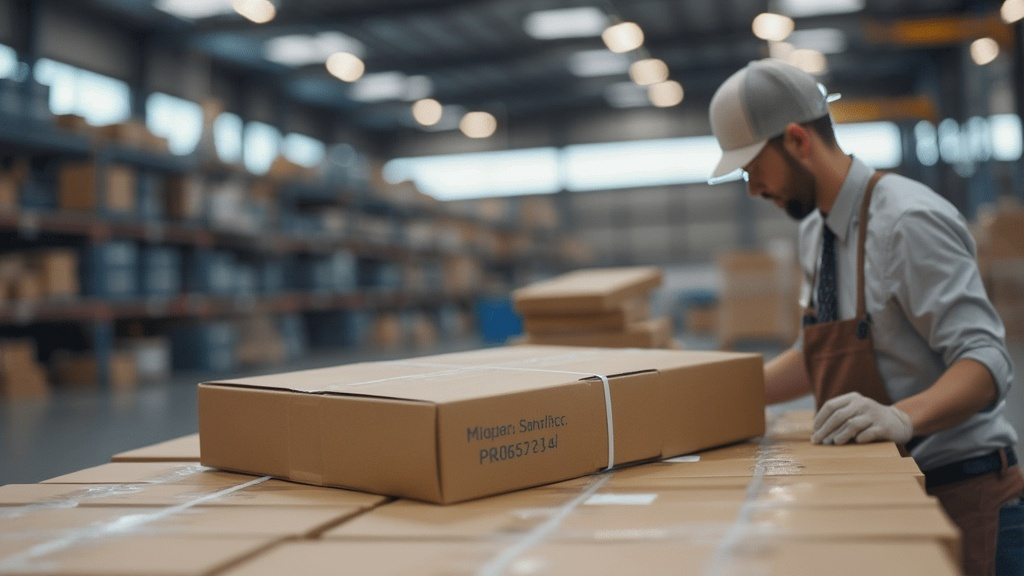Before your products embark on their long journey across oceans and borders, one crucial step stands between you and potential headaches: Quality Control (QC). If you are an importer, retailer, or product manager, quality control before shipment is your safety net. After all, no one wants to open a shipment only to discover that half of the goods are damaged or defective.
In this guide, we will walk you through the steps of managing quality control before your products ship out, and how it can save you from costly mistakes. Think of this article as your checklist to ensuring your products are perfect—before they leave the factory and hit the open road—or ocean.
Let’s dive in!

What Is Quality Control Before Shipment?
Quality control before shipment refers to the steps taken to ensure that products meet the agreed standards before they leave the manufacturing facility. These standards could include appearance, functionality, and even safety requirements. Whether it’s baby clothing, toys, or strollers, QC helps you catch any defects before the products reach the customer.
Without QC, you’re trusting that everything will work out on its own. But why leave it to chance when you can inspect and test before shipment?
Why Is Pre-shipment Quality Control Crucial?
So why do you need to pay close attention to QC? It’s simple: It protects your business, reputation, and your customers.
Key Reasons to Prioritize Pre-shipment QC:
- Reduced Returns: Ensuring quality before shipment can save you from dealing with returns or exchanges later on.
- Customer Satisfaction: Happy customers are loyal customers. Proper QC ensures that the products meet their expectations.
- Brand Reputation: A reputation for quality can build your brand’s trust. A reputation for poor quality? Not so much.
- Lower Costs: Detecting issues early means fewer costs from returns, replacements, and damage.
Types of Quality Control Inspections Before Shipment
Quality control isn’t a one-size-fits-all process. It involves different types of inspections, depending on your product type. Here are the most common forms of inspection you should implement:
1. Visual Inspections (Aesthetic Checks)
The first thing customers will notice about your products is how they look. For baby products, this could include checking that there are no stains, scratches, or color inconsistencies. But it’s not just about looks. A clean finish and proper labeling (like size tags) are also critical.
Example Table: Visual Inspection Checklist
| Item | Checkpoints |
|---|---|
| Fabric | Ensure there are no stains, marks, or damage. |
| Size Tags | Verify correct placement and legibility. |
| Colors | Confirm color consistency and no fading. |
| Product Finish | Check for smoothness and any loose threads. |
2. Functional Testing
Now that we’ve covered the appearance, let’s focus on the functionality. For baby products like strollers or high chairs, it’s essential to ensure everything is working as it should.
Key Tests Include:
- Safety Harnesses: Ensure that seat belts, buckles, or straps are secure.
- Brakes and Locks: Test strollers or car seats to ensure they lock securely.
- Toys: For toys, confirm there are no small parts that could pose choking hazards.
Example Table: Functional Testing Checklist
| Product | Test Requirements |
|---|---|
| Strollers | Test wheels, locks, and brakes for sturdiness. |
| Toys | Ensure all parts are large enough to avoid choking hazards. |
| Car Seats | Verify safety harness function and reclining mechanisms. |
3. Compliance with Safety Standards
For many baby products, compliance with international safety standards is non-negotiable. These standards ensure that the products are safe for use. Compliance certifications such as:
- EN71 (European standard for toys)
- CPSIA (U.S. Consumer Product Safety Improvement Act)
- GOTS (Global Organic Textile Standard)
- OEKO-TEX Standard 100 (non-toxic textiles)
If your baby products are certified, it guarantees they have passed rigorous safety checks. Ensure you have the proper certifications for your product before shipping.
How to Implement a Robust Quality Control Process
Managing quality control is about preparation and consistency. Here’s how you can set up an effective QC system for your products.
1. Collaborate with Your Supplier
The foundation of quality control starts with clear communication with your supplier. Ensure that you share your quality requirements, expectations, and any standards or certifications you need the products to meet. Setting clear expectations early on helps prevent misunderstandings later.
If you need to check out potential suppliers, try these resources:
2. Conduct Regular Factory Audits
Audits are a great way to keep track of the manufacturing process and ensure the quality of the products. Regular factory audits help you identify potential issues before they become problems. Consider conducting audits:
- Pre-production: Confirm the materials meet your standards.
- In-process: Inspect the products as they are being made.
- Final inspection: Perform a thorough check before shipment.
3. Use Third-Party Inspection Agencies
Third-party inspection agencies like SGS or Bureau Veritas can provide an unbiased report of the product quality. These companies specialize in inspecting products on your behalf, ensuring that all the necessary quality checks are done.
Benefits of Using Third-Party Inspectors:
- Unbiased and professional inspections.
- Detailed inspection reports.
- Assurance that your supplier is adhering to agreed-upon standards.
The Benefits of Pre-shipment Quality Control
1. Reduced Risks and Surprises
By inspecting your products beforehand, you catch issues early, which prevents costly mistakes after shipment. If a product fails quality control, you can either have the issue fixed or replace the item.
2. Ensures Product Consistency
Implementing QC guarantees that each product is the same, ensuring that your customers get the same great experience with every purchase.
3. Better Customer Experience
When your customers receive exactly what they expect, it enhances their satisfaction and boosts repeat purchases.
Conclusion: Quality Control—The Key to Happy Customers
Quality control before shipment is one of the most important investments you can make in your business. By performing detailed inspections—whether they are visual, functional, or compliance-based—you ensure that your customers receive the best version of your product.
By following these steps and working with reliable suppliers and third-party inspection services, you can avoid the headache of returns, damaged goods, or reputation issues.
Remember, happy customers lead to repeat customers, and quality control is the bridge that makes it all happen. Happy customers are your best marketing tool, so invest in QC today!
FAQs About Quality Control Before Shipment
Q1: What happens if a product fails the quality inspection?
If a product fails, it’s essential to address the issue with the manufacturer. You can have the defect fixed, or ask for replacements. If possible, negotiate a discount for the inconvenience.
Q2: How can I track the quality control process during manufacturing?
Request regular updates from your supplier, and use third-party inspectors to check the quality at different stages of the manufacturing process.
Q3: How can I make sure my products comply with international standards?
Make sure your products meet certifications like CPSIA (for U.S. markets), EN71 (for Europe), and others specific to your product category. Always check with the relevant bodies or regulatory standards.

